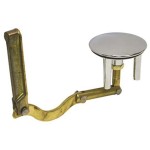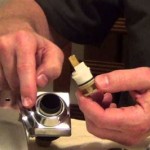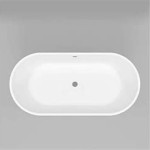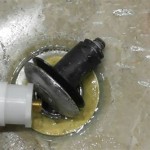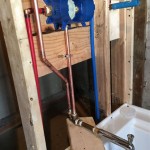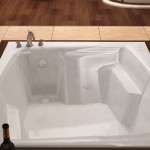Do You Need a Trap on a Bathtub Drain? Understanding Plumbing Requirements
The question of whether a trap is necessary on a bathtub drain is not merely a matter of personal preference. It is a fundamental aspect of plumbing design and building code compliance. The drain trap, often a U-shaped pipe segment, is an essential component of a safe and functional plumbing system, serving multiple critical purposes beyond simply removing wastewater.
To fully understand the necessity of a trap on a bathtub drain, it is crucial to explore its functions, the specific risks associated with its absence, and the consequences of non-compliance with plumbing codes. This includes examining the science behind sewer gases, the mechanisms by which traps prevent their entry into living spaces, and the implications for both health and structural integrity.
The Primary Function: Preventing Sewer Gas Intrusion
The most significant function of a drain trap is to create a water seal. This water seal acts as a barrier, effectively blocking the passage of sewer gases from the drainage system into the bathroom. Sewer gases are a complex mixture of potentially harmful gases produced by the decomposition of organic matter within the sewage system. These gases include methane, hydrogen sulfide, ammonia, and carbon dioxide, among others.
Hydrogen sulfide, in particular, is a potent neurotoxin that can cause a range of health problems, even at low concentrations. Exposure can lead to irritation of the eyes, nose, and throat, as well as headaches, dizziness, nausea, and respiratory problems. At higher concentrations, hydrogen sulfide can be fatal. Methane, another component of sewer gas, is highly flammable and can pose an explosion hazard if allowed to accumulate in enclosed spaces.
The U-shaped configuration of the trap, often referred to as a P-trap when connected horizontally, is designed to hold a small amount of water after each use of the bathtub. This standing water consistently refills as the next usage provides additional drainage. This water creates the necessary seal that prevents sewer gases from flowing back up the drainpipe and into the bathroom. Without a trap, these gases would freely vent into the living space, creating an unpleasant and potentially dangerous environment. The effectiveness of the trap depends on maintaining this water seal. If the trap dries out, the sewer gases will have a direct pathway into the room.
The Role of Venting in Conjunction with Traps
While the trap prevents sewer gases from entering the room, it cannot function correctly without a proper venting system. The venting system, composed of a network of pipes connected to the drainage system, allows air to enter and equalize pressure within the pipes. This pressure equalization is crucial for maintaining the water seal in the trap.
When water drains down a pipe, it creates a negative pressure (suction) behind it. Without a vent, this negative pressure can siphon the water out of the trap, breaking the water seal and allowing sewer gases to enter the room. Similarly, positive pressure in the drain line can push the water out of the trap. The vent allows air to enter the piping system to neutralize these pressure fluctuations, ensuring the water seal remains intact.
The vent pipe typically extends upwards through the roof of the building, providing a pathway for air to enter the plumbing system and for sewer gases to vent safely into the atmosphere. The placement and design of the venting system are critical and must comply with local plumbing codes to ensure proper functioning. A poorly designed or obstructed venting system can compromise the effectiveness of the traps and allow sewer gases to escape into the building despite the presence of a trap.
Plumbing Codes and Regulatory Requirements
All established plumbing codes, such as the Uniform Plumbing Code (UPC) and the International Plumbing Code (IPC), mandate the installation of traps on all plumbing fixtures, including bathtubs. These codes are designed to protect public health and safety by ensuring that plumbing systems are installed and maintained in a manner that prevents the spread of disease and protects against hazards.
The specific requirements for traps, including their size, materials, and installation methods, are detailed in these codes. These regulations cover aspects such as the minimum trap seal depth (the vertical distance between the inlet and outlet of the trap), the maximum distance between the trap and the vent, and the types of materials that are approved for use in trap construction. These requirements are based on extensive research and practical experience, and they are regularly updated to reflect advances in plumbing technology and knowledge.
Failure to comply with these plumbing codes can result in various consequences, including fines, mandatory corrections, and even legal action. In addition, non-compliance can void insurance coverage and create potential liability in the event of property damage or personal injury. The enforcement of plumbing codes is typically the responsibility of local building departments and plumbing inspectors, who conduct inspections to ensure that plumbing systems are installed in accordance with applicable regulations.
Installing a trap on a bathtub drain is not an optional choice; it is a legal requirement in almost all jurisdictions. Furthermore, the trap must be installed correctly and in accordance with the specific requirements of the applicable plumbing code. This often requires the expertise of a licensed plumber who is familiar with local regulations and best practices.
Beyond Sewer Gas: Preventing Drain Clogging
While the primary function of a trap is to block sewer gases, it can also contribute to preventing drain clogs. The curved shape of the trap can catch larger debris, such as hair, soap scum, and small objects, preventing them from entering deeper into the drainpipe and causing obstructions. While not its primary purpose, this incidental benefit can help to reduce the frequency of drain clogs and the need for drain cleaning.
The collected debris within the trap can be easily removed by cleaning the trap periodically. Many traps are designed with a cleanout plug or access point that allows for easy removal of accumulated debris without disassembling the entire drain system. Regular cleaning of the trap can help to maintain optimal drainage performance and prevent the buildup of stubborn clogs that may require more extensive and costly repairs.
However, it is important to note that the trap is not a substitute for proper drain maintenance practices. Regular flushing of the drain with hot water and the use of drain screens to catch hair and debris are also essential for preventing drain clogs. Over-reliance on the trap to catch debris can lead to its own set of problems, such as a buildup of organic matter that can create foul odors and further contribute to clogs.
The Importance of Proper Installation and Maintenance
Even when a trap is installed, its effectiveness depends on proper installation and regular maintenance. A poorly installed trap can leak, become misaligned, or fail to create an adequate water seal. This can defeat its purpose and allow sewer gases to enter the room. Similarly, a trap that is not properly maintained can become clogged with debris, leading to slow drainage and unpleasant odors.
During installation, it is crucial to ensure that the trap is properly aligned and securely connected to the drainpipe. All connections should be watertight to prevent leaks. The trap should also be installed at the correct height and angle to ensure proper drainage. A trap that is installed too low can become submerged in standing water, which can promote the growth of bacteria and the production of foul odors. A trap that is installed at too steep an angle may not hold enough water to create an adequate seal.
Regular maintenance of the trap should include periodic cleaning to remove accumulated debris. The frequency of cleaning will depend on the usage of the bathtub and the amount of debris that accumulates. In general, it is recommended to clean the trap at least once a year, or more frequently if necessary. During cleaning, it is important to inspect the trap for any signs of damage, such as cracks or leaks. If the trap is damaged, it should be replaced immediately to prevent sewer gases from entering the room.
In conclusion, the presence of a trap on a bathtub drain is not a matter of choice; it is a fundamental requirement for protecting health, ensuring compliance with plumbing codes, and maintaining a safe and functional plumbing system. Its functionality, combined with proper venting and maintenance, guarantees a healthier environment and prevents potential hazards.

Older Bathroom With A Drum Trap Here S How To Clear It

Plumbing Proper Size Drain And Venting Behind New Bathtub Home Improvement Stack Exchange

Older Bathroom With A Drum Trap Here S How To Clear It

Bathtub Drain Trap Too Deep For New Ceiling Doityourself Com Community Forums

How To Replace A Bathtub Drum Trap This Old House

What Is A P Trap And How Does It Work Oatey

Understanding Bath Traps

Bathtub Plumbing Installation Drain Diagrams Edmond Refinishing

Installing A P Trap For Bathtub 2024

Plumbing How Can I Vent A Bathtub Trap When The Drain Is Routed Under Tub Home Improvement Stack Exchange

